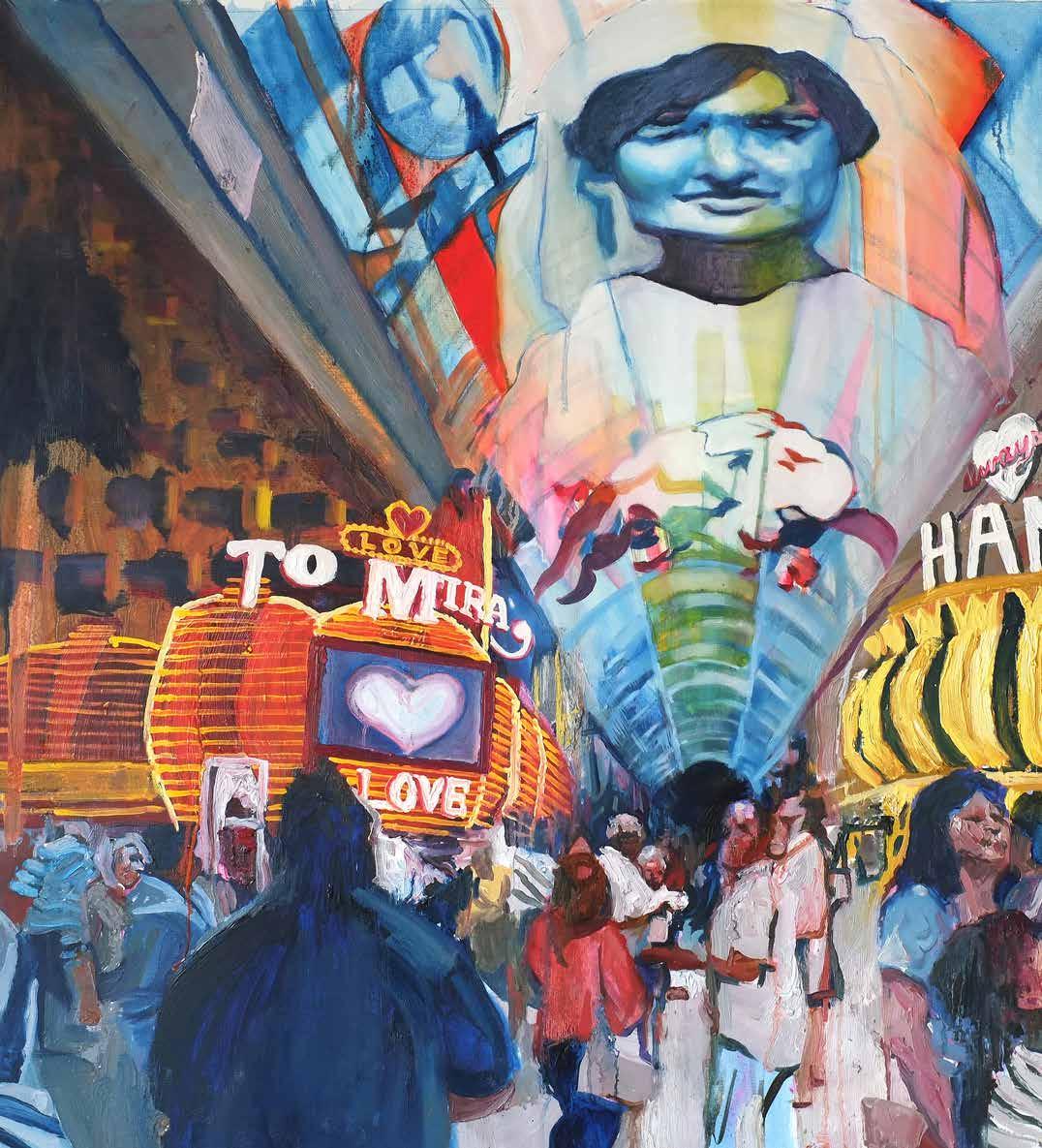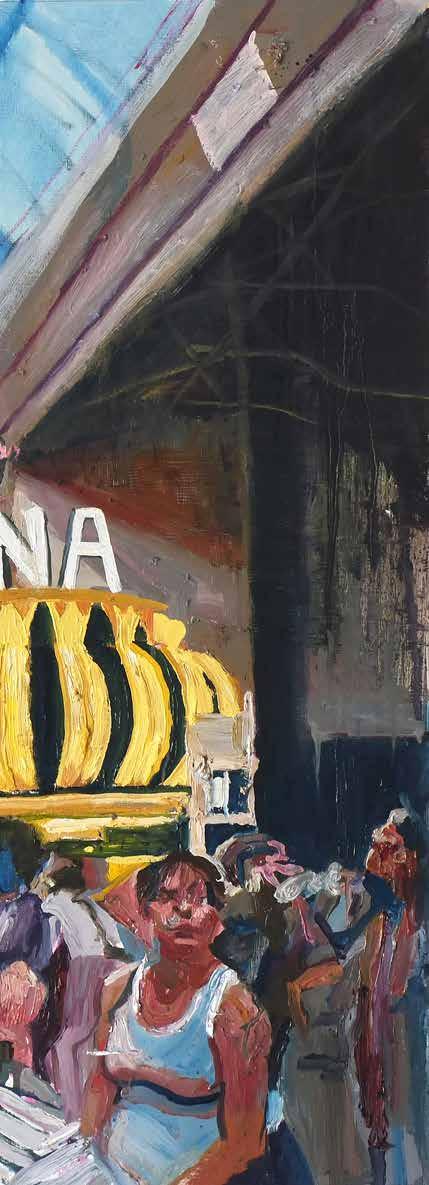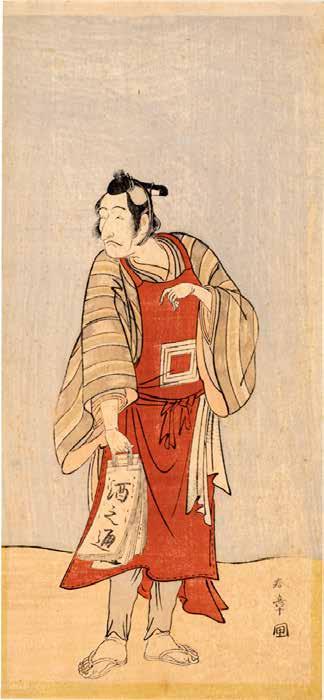
2 minute read
The Exquisite Corpses of Takayanagi Yutaka
TAKAYANAGI YUTAKA (b. 1941) is one of a wave of artists who brought fresh, intriguing approaches to figurative printmaking in postwar Japan. His works recall the Dadaist movement in Europe during the 1910s and 1920s, when artists embraced nonsensical humor in reaction to the exploitation of rationalism for military purposes during World War I (1914–1918).
Takayanagi’s prints are particularly reminiscent of the “exquisite corpse,” a language game invented in 1925 by Marcel Duchamp (1887–1968) and others, in which words cut from a newspaper are randomly arranged to create unpredictable poems. (The name originates from their first poem: "the exquisite corpse shall drink the new wine.") Inspired by Duchamp, Max Ernst (1891–1976) and his Surrealist comrades popularized a graphic version of the game. As a way of exploring the subconscious alongside depictions of dreams and automatic writing, they produced collaborative drawings, not allowing participants to view one another’s contributions as they sketched. These prints by Takayanagi have close connections with both versions of the exquisite corpse. Discrete elements, including a portrait, a body part, an animal, and an abstract shape, populate each composition, and we are challenged to determine the internal logic that links them together.
Advertisement
Takayanagi’s creative journey is distinctly private, weaving together references to his favorite artists and personal memories. Having grown up during the Pacific War (1941–1945) and the subsequent Occupation of Japan by Allied Powers (1945–1952), Takayanagi’s own experiences mirror the turbulent, seemingly irrational chapters of world history found in Dadaist and Surrealist artworks. We viewers can do little more than speculate about the personal, philosophical, and political meanings the artist’s creations may possess and consider how they resonate with our own experiences.

The Five Senses
AUG 10, 2023–JAN 14, 2024 • GALLERY 14
KNOWN FOR CONTRASTING her traditional Korean upbringing with modern American life, Hawai‘i-based painter and ceramicist Lauren Hana Chai (b. 1991) includes a personal story or cultural narrative within each work of art. Her current series juxtaposes traditional elements such as Korean folk art and Buddhist temple architecture, with reflections on modern society and contemporary identity. When the artist was 11, her mother disappeared. The beautiful, haunting elements in her paintings are deeply connected to the search and longing for her mother, whom Chai believes is still alive. The exhibition, part of the museum's ongoing commitment to presenting work by contemporary Hawai‘i artists, includes selections from Chai’s series “Last Known Locations,” which depict places such as Las Vegas and Hong Kong, locations her mother was known to frequent or where she had a connection. The Five Senses reveals the breadth of Chai’s work, united by a visual sensitivity and the artist’s interests in spirituality. See p. 18 for a Q+A with Lauren Hana Chai.

Likeness: Realistic Portraits by Shunshō and Sharaku
AUG 17–NOV 19, 2023 • GALLERY 21
Made possible by the Robert F. Lange Foundation
KATSUKAWA SHUNSHŌ (1726–1792) and Tōshūsai Sharaku (active c. 1794–1795), two artists whose work is well represented in HoMA's deep collection of Japanese prints, were pioneers in the genre of Japanese portraiture. Both produced nigao-e (literally, “pictures of facial resemblance”)—prints that sought to capture the distinctive facial characteristics of Kabuki actors. Their images typically depict an actor in a mie (literally, a “visual pull”), a moment during a kabuki performance when the performer assumes a static, choreographed pose and contorts his face to convey to the audience the intensity of his emotions. One particularly frequent subject of Shunshō was the revered actor Ichikawa Danjūrō V (1741–1806; known later in his career as Ichikawa Ebizō). In addition to the crest of three concentric squares that decorate his costumes, Danjūrō V can be identified in these images by his hooked nose, pouting mouth, narrow eyes, high-set eyebrows, and elongated face.
Sharaku’s portraits similarly emphasized a sense of realism, but to emphasize the actors’ emotional state, he exaggerated their facial features and accentuated unflattering aspects of their appearance. He was particularly notorious for his depictions of onnagata male actors who specialized in female roles—in which he stripped away their diligently constructed façades of feminine beauty. The brazen honesty of Sharaku’s prints make them some of the most recognizable works in the history of Japanese art.






